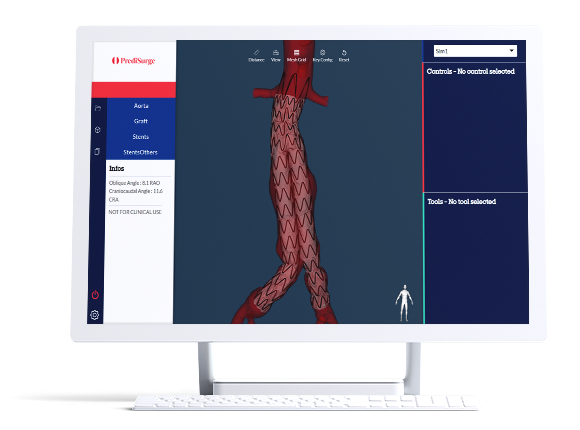
PlanOp™ for Clinicians
Numerical Simulation for
Standard & Complex EVAR
Investigate different device implantation approaches and adjust therapy strategy for each specific patient.

Digital rehearsal
of standard and complex EVAR interventions
centers
publications

Patient-specific digital twin
A patient-specific digital twin is a digital replica of a patient’s organ, extracted from pre-operative imaging. It has not only the same shape, but also similar biomechanical properties as the actual organ.
This digital twin is used to simulate accurately devices implantation, taking into account how devices interact with the anatomy.
PlanOp™ Vascular
PlanOpᵀᴹ Vascular takes into consideration the interactions between the endograft and the patient’s anatomy, assisting physicians in evaluating the risk of complications and adapting their intervention strategy accordingly*.
An Endoleaks Risk Index (ERI) for standard EVAR*
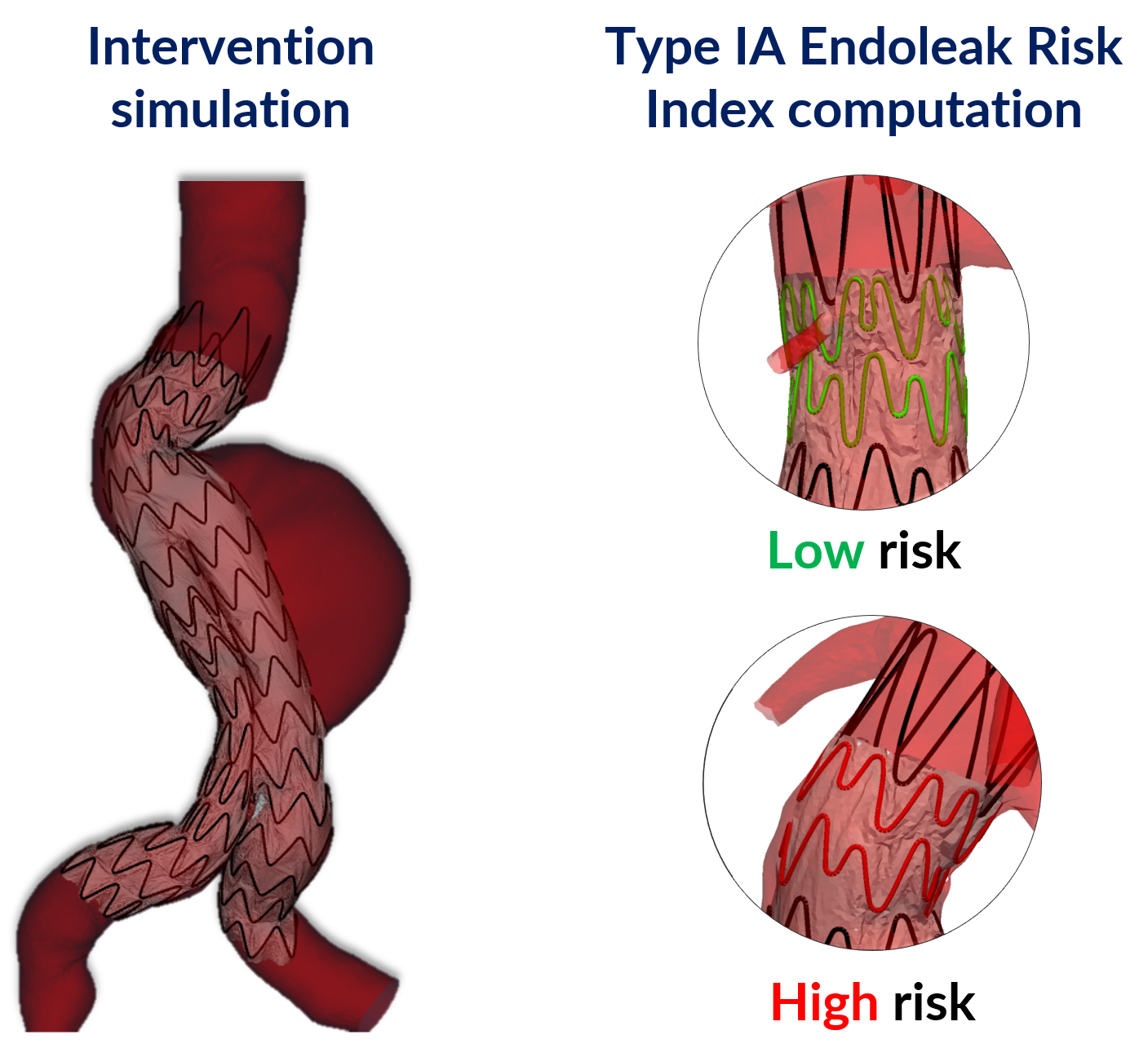
Preliminary results suggest digital twin technology could help physician to determine risk of type IA endoleak
For standard EVAR, digital twin technology may help the physician to evaluate potential risk of complications*.
In particular, the proximal apposition of the endograft can be analyzed on the intervention simulation. An Endoleak Risk Index has been developed to characterize the quality of this apposition.
EnduSim I¹ study shows strong correlation between high ERI and type IA endoleaks.


*: Planop Aortic V2 (simulation and ERI computation) is available in EU to empower physicians in the planning of endovascular interventions for aortic aneurysms;
1: Retrospective study on 28 patients: 7 with early, 8 with late type IA endoleaks and a control group of 13 patients with follow-up >5 years. EnduSim publication in progress.
A right fenestration – ostium alignment for complex EVAR*
Growing scientific evidence shows that digital twin technology is both safe and accurate for custom-made endograft designs
For complex EVAR, check with PlanOp that the custom endograft design is a perfect fit for your patient. Adjust fenestration position according to simulation and avoid misalignment issue on the day of the procedure*.

99% Spot on
Right alignment fenestrations Vs ostia²

100% technical success
in fen catheterization and stenting²

60 seconds catheterization
Media fen catheterization time³
Why PlanOp™ Vascular?
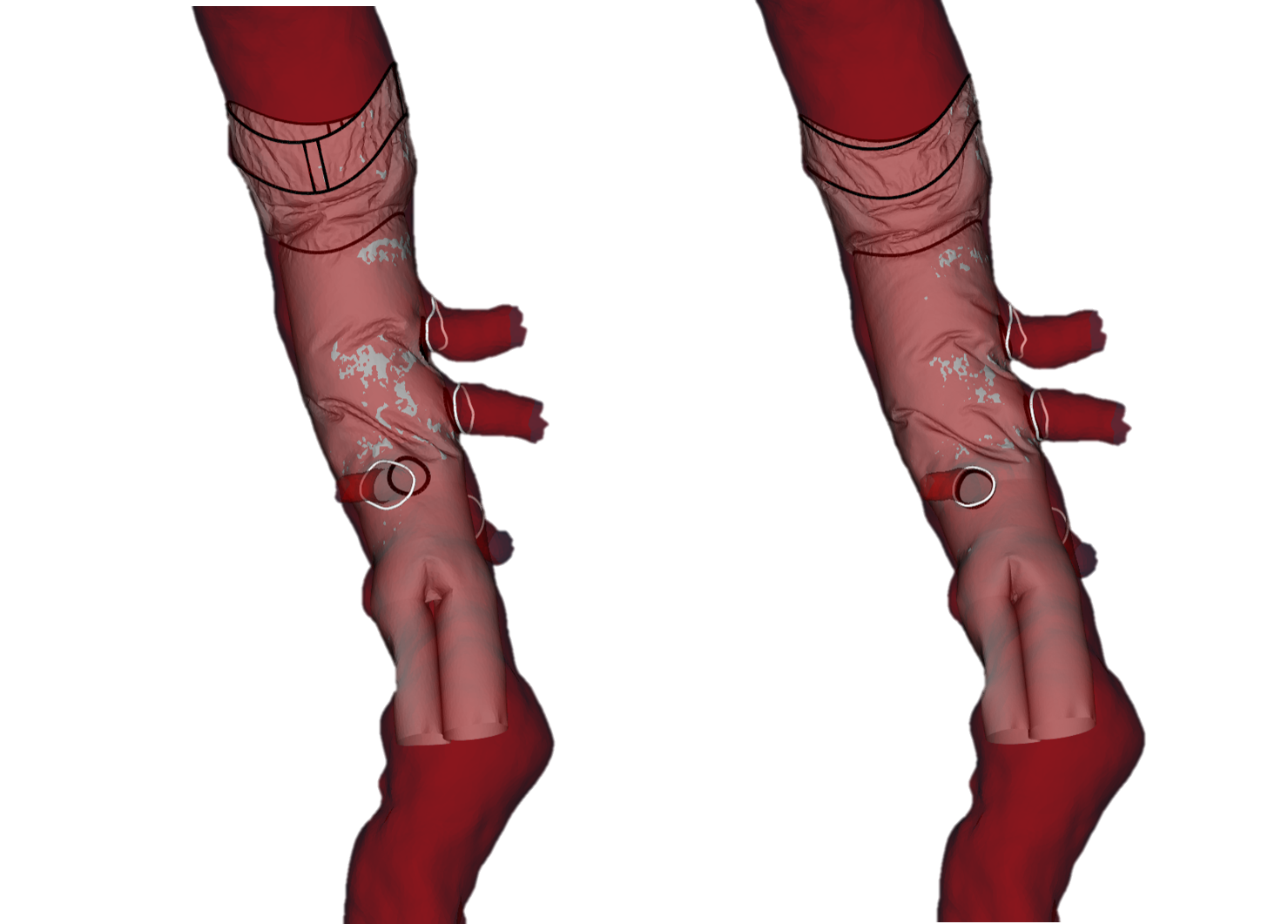
Accurate simulations for short interventions times*
Right fenestration – Ostium alignment
- In tortuous anatomies, not taking into account the interaction between the custom made endograft and the aorta can lead to significant fenestrations malposition.
- As the interactions between the custom made endograft and the aorta are taken into account, PlanOp ® anticipates fenestration misalignment.
- PlanOp® computes fenestrations positions iteratively, until the right alignment with the corresponding ostia is obtained;
- Prospective use of PlanOp for fenestration positioning in custom made endograft results in median catheterization time as low as 60 sec³.
3: Commercial post-market registry (95 patients, 363 fenestrations).

Digital twin technology could help physician to assess the risk of complications*
Digital rehearsal of the intervention
- Virtual tests of different devices designs & landing zones
- Oversizing: Interactions between devices taken into account
- Assessment of the stent-graft apposition on the simulation could help the physician to avoid type Ia endoleak
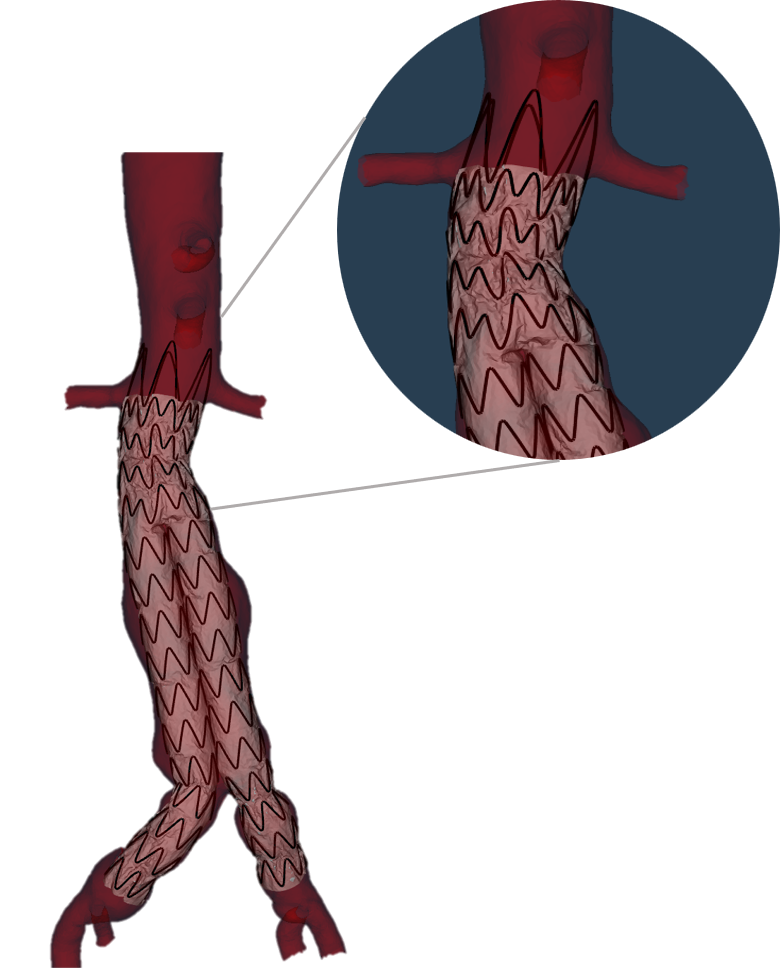
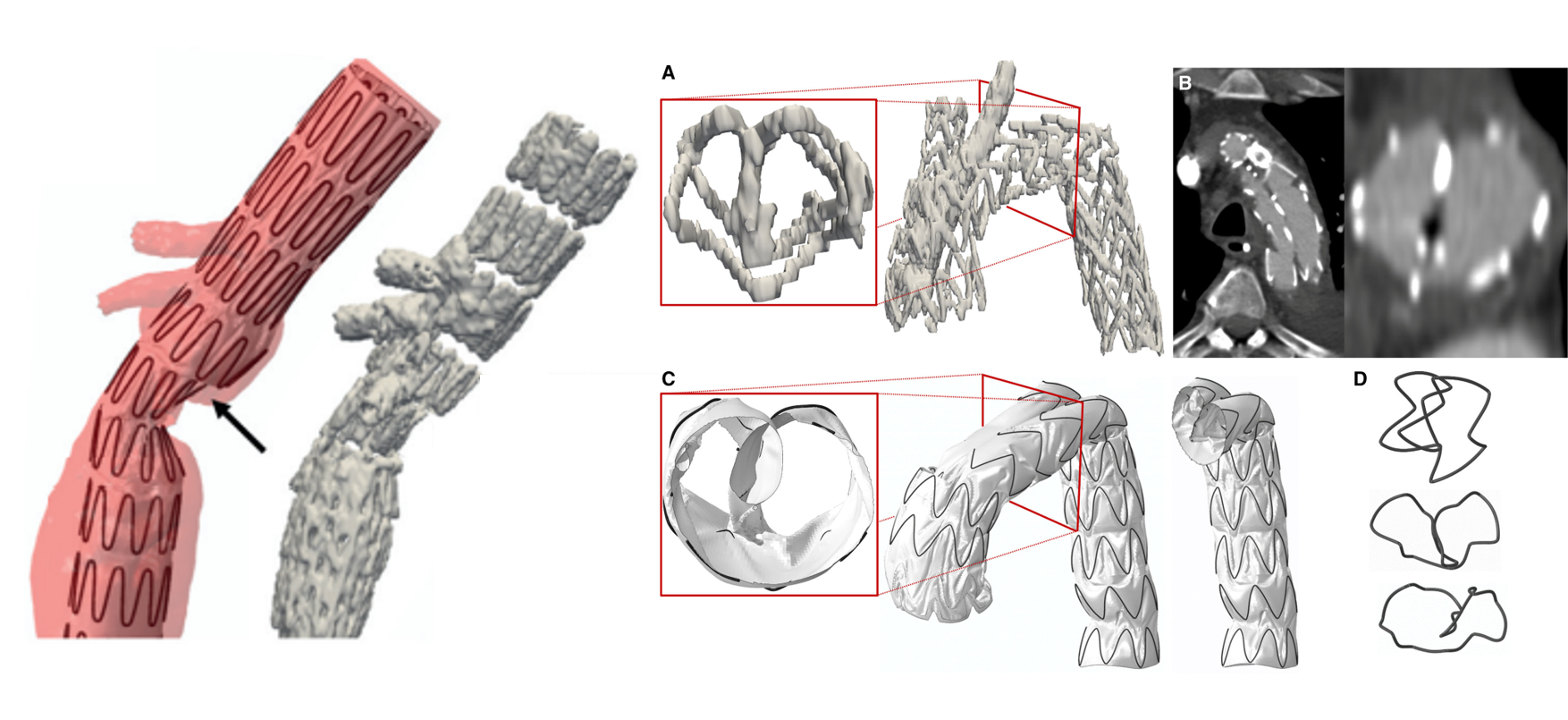
Realistic simulation thanks to digital twin technology*
Comparison between simulation and stent extracted from post-op CT shows accuracy of our digital twin technology.
Lucie Derycke papers:
👉 « Computer Simulation Model May Prevent Thoracic Stent-Graft Collapse Complication »
👉 « Patient Specific Computer Modelling for Automated Sizing of Fenestrated Stent Grafts »

*: Planop Aortic V2 (simulation and ERI computation) is available in EU to empower physicians in the planning of endovascular interventions for aortic aneurysms; PlanOp Aortic is currently not available in other countries..
Contact us
Do you have some questions?
Would you like to try our products?
Our team would be delighted to help you.
Please send us a message and we will get back to you as soon as possible.